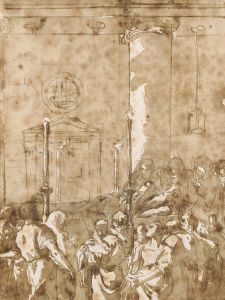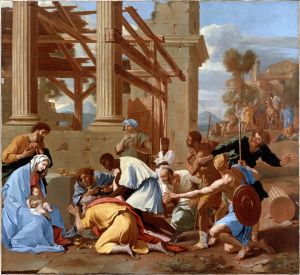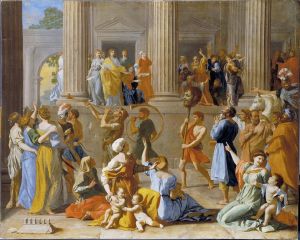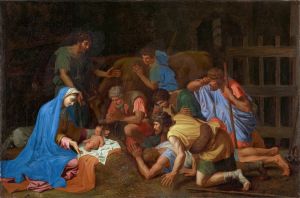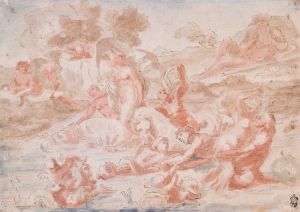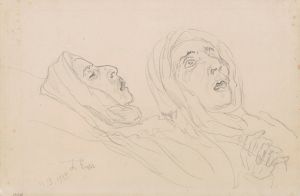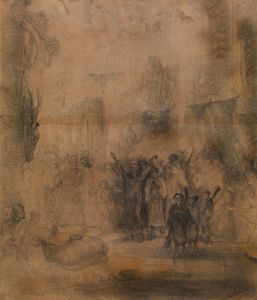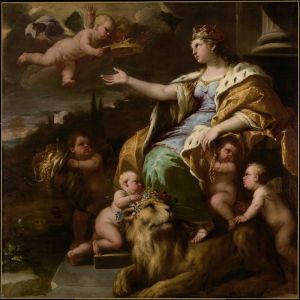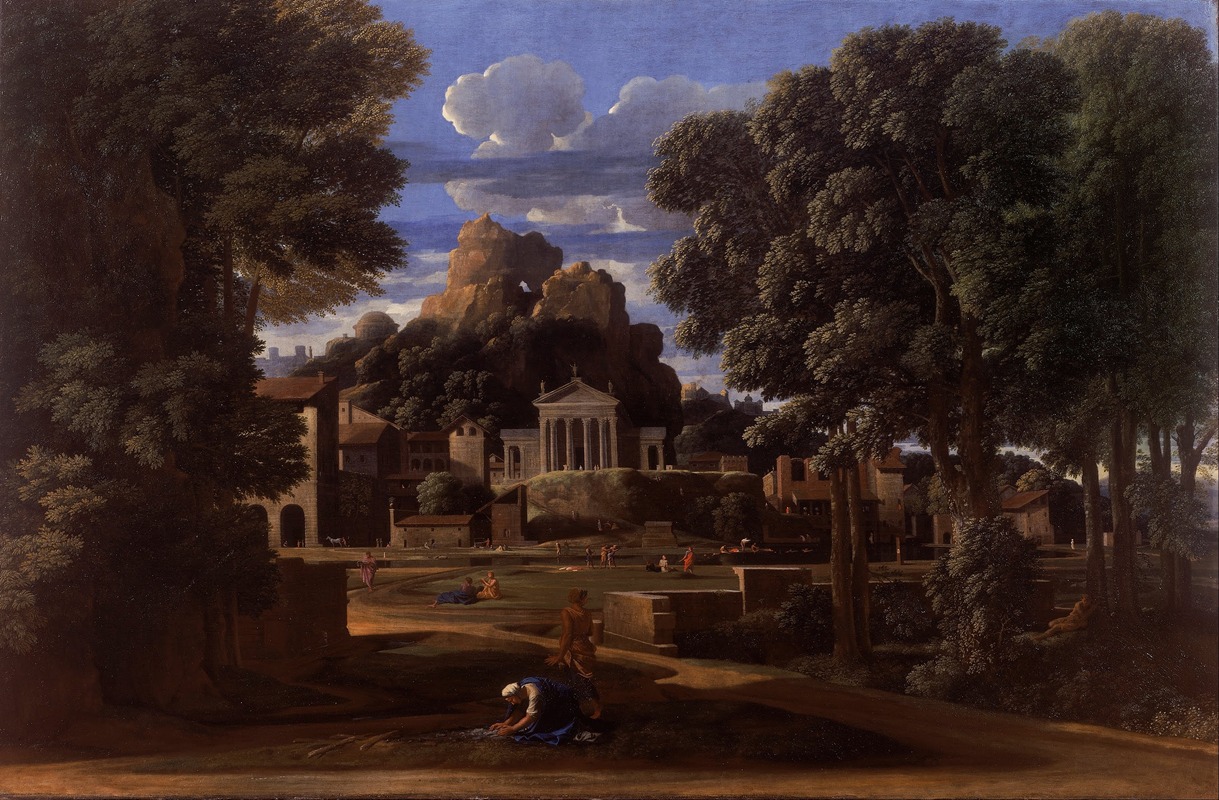
Landscape with the Ashes of Phocion
A hand-painted replica of Nicolas Poussin’s masterpiece Landscape with the Ashes of Phocion, meticulously crafted by professional artists to capture the true essence of the original. Each piece is created with museum-quality canvas and rare mineral pigments, carefully painted by experienced artists with delicate brushstrokes and rich, layered colors to perfectly recreate the texture of the original artwork. Unlike machine-printed reproductions, this hand-painted version brings the painting to life, infused with the artist’s emotions and skill in every stroke. Whether for personal collection or home decoration, it instantly elevates the artistic atmosphere of any space.
"Landscape with the Ashes of Phocion" is a notable painting by the French Baroque artist Nicolas Poussin, created in 1648. Poussin, renowned for his classical approach to painting, often drew inspiration from ancient history and mythology, and this work is no exception. The painting is housed in the Walker Art Gallery in Liverpool, United Kingdom.
The artwork depicts a scene from the life of Phocion, an Athenian statesman and general who lived during the 4th century BCE. Phocion was known for his integrity and opposition to corruption, which eventually led to his execution on charges of treason. After his death, his body was denied a proper burial within the city, and his ashes were scattered outside Athens. Poussin's painting captures the moment when Phocion's widow collects his ashes, symbolizing loyalty and respect amidst political turmoil.
Poussin's composition is a masterful blend of landscape and narrative. The painting is set in a serene, idealized landscape, characteristic of Poussin's style, which often features classical architecture and harmonious natural elements. The landscape serves as a backdrop to the human drama, emphasizing the timeless nature of the themes of justice and honor. The figures in the painting are depicted with a sense of calm dignity, reflecting Poussin's interest in stoicism and the moral virtues of antiquity.
The use of light and shadow in "Landscape with the Ashes of Phocion" is particularly noteworthy. Poussin employs a balanced distribution of light to guide the viewer's eye across the canvas, highlighting the central figures and the surrounding landscape. This technique not only enhances the narrative but also creates a sense of depth and perspective, drawing the viewer into the scene.
Poussin's work is often associated with the classical tradition, and "Landscape with the Ashes of Phocion" exemplifies his dedication to clarity, order, and rationality. The painting reflects his belief in the power of art to convey moral and philosophical messages, a hallmark of his oeuvre. Poussin's influence on later artists, particularly in the realm of landscape painting, is significant, as he helped to elevate the genre to a level of intellectual and artistic respectability.
In addition to its artistic merits, the painting is a testament to Poussin's ability to weave complex narratives into his works. By choosing to depict the story of Phocion, Poussin not only engages with historical subject matter but also invites viewers to reflect on themes of virtue, sacrifice, and the consequences of political strife. This engagement with history and philosophy is a defining characteristic of Poussin's work and contributes to his lasting legacy in the history of art.
Overall, "Landscape with the Ashes of Phocion" is a quintessential example of Nicolas Poussin's artistic vision, combining classical themes with a refined aesthetic sensibility. The painting continues to be admired for its compositional elegance, narrative depth, and the moral questions it raises, securing its place as a significant work in the canon of Western art.







